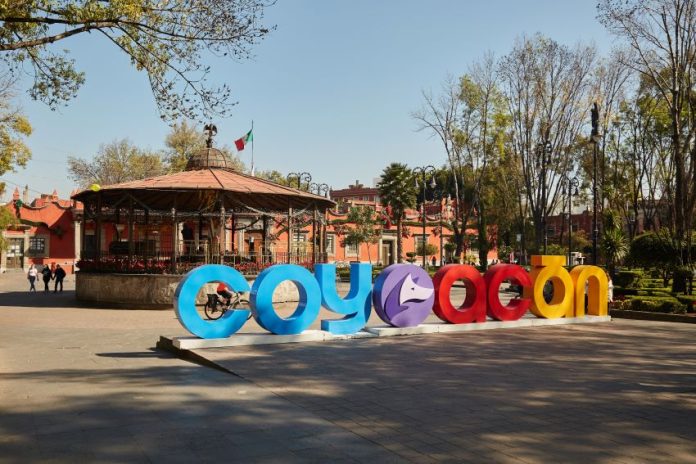Borough: Coyoacán
Established: 1521, as Villa Coyoacán
Location: 10 km south of the Angel de la Independencia
Pre-Columbian inhabitants: Colhuas, Tepanecs and Mexica
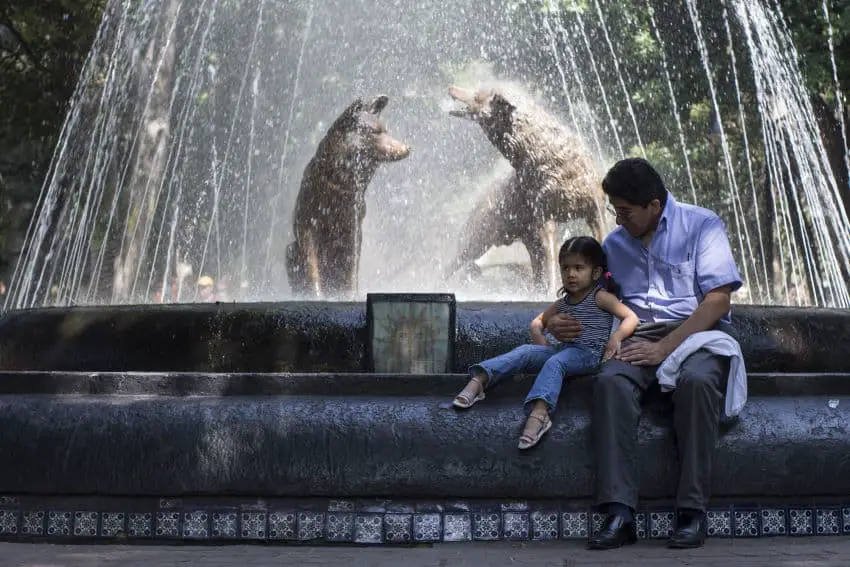
Who lives here
The Historic Center of Coyoacán comprises several smaller neighborhoods, including Villa Coyoacán, Del Carmen, Santa Catarina and La Concepción. Its bohemian lifestyle attracts young families and artists, while its proximity to UNAM makes it a hub for students. According to government data, 23% of the borough’s inhabitants are between the ages of 25 and 49. There is a notable mix of newcomers and families that have lived here for generations, adding to the area’s eclectic feel.
A litany of colorful characters have lived in Coyoacán’s Historic Center, notably Frida Kahlo, León Trotsky, Octavio Paz and Rufino Tamayo — as well as at least three Mexico News Daily staff members.
A brief history of Coyoacán
The Colhuas of Culhuacan transformed the future Coyoacán into an urban center, settling here in the 7th century. In the 15th century the Tepanecs of Azcapotzalco arrived, displacing the Colhuas and establishing the area as a center of trade, agriculture and commerce. At some point, the settlement acquired its current Nahuatl name, which is most often translated as “place of coyotes.”
Coyoacán’s strategic position on Lake Texcoco caught the attention of the Mexica, who soon seized the area from the Tepanecs. Plazas, residential zones and temples were constructed to the chagrin of the conquered Tepanecs, the majority of whom detested the Mexica. In 1521, Hernán Córtes and his allies launched their campaign against the Mexica Empire, they chose Coyoacán as their headquarters, establishing the town of Villa Coyoacán. A strategic location, abundant agricultural resources and local support made the cultural hub an ideal place to become the first capital of New Spain.
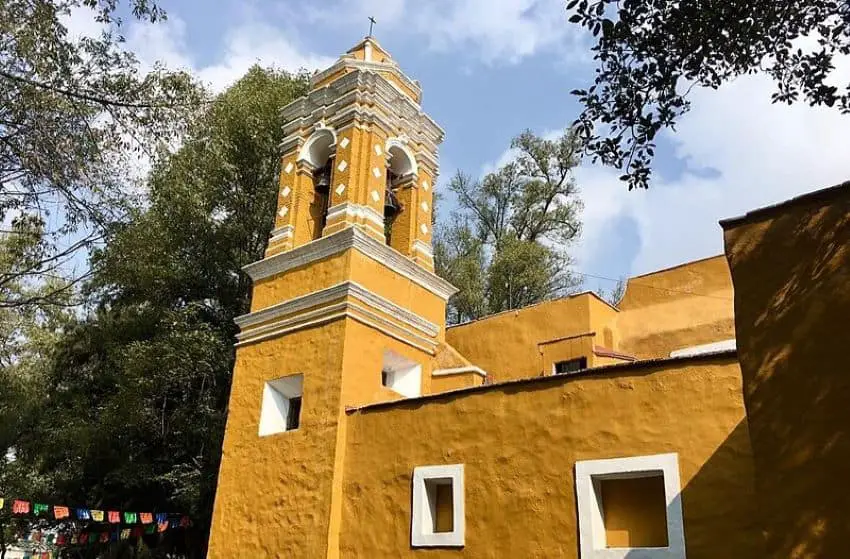
Coyocán remained its own municipality until 1857, when it was officially incorporated into the Federal District. It retained its small-town and semi-rural character until sometime in the late 19th and early 20th centuries, when it was swallowed up by the urban sprawl of what is now Mexico City. The borough of Coyoacán, taking its name from the ancient town, was designated in 1928, and is still the physical heart of Mexico City, sitting dead in the center of the metropolis.
A guide to Coyoacán today
Today, the quaint Barrio Mágico is known for its cobblestone streets, colonial architecture and vibrant cultural scene. The weekends are especially lively. Expect streets lined with food carts selling everything from churros to esquites, live music in Plaza de La Conchita and various amusement park-style rides for the little ones. Don’t miss the neighborhood dance party on Sunday evenings at the Jardin del Arte Allende.
The Saturday art market in Plaza Allende is smaller than its more famous cousin in San Ángel, but still worth checking out if you find yourself in the area.
Coyoacán is great if: You love Spanish colonial architecture, colorful facades, traditional festivals and an authentically Mexican community.
What to do in Coyoacán
Frida Kahlo Museum: Also known as the Casa Azul, this is the former home of Mexico’s most iconic female artist. Reservations must be made in advance.
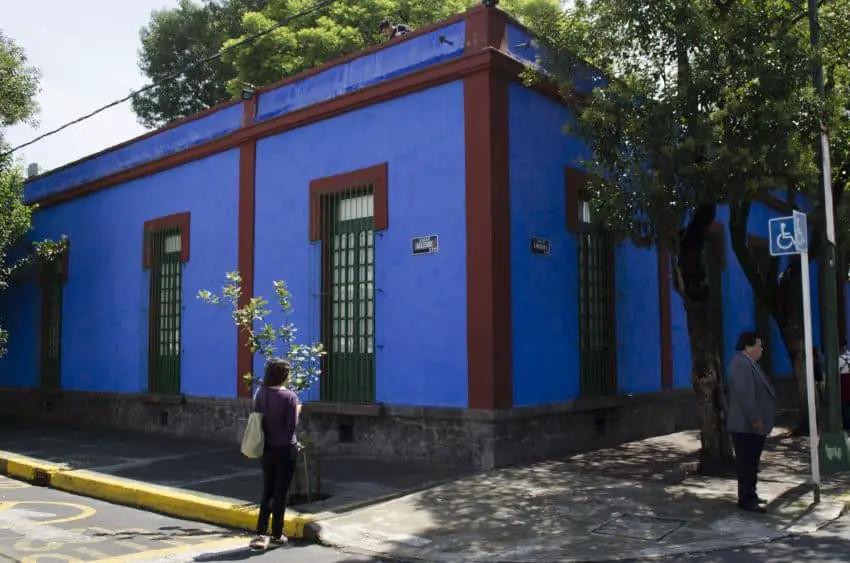
Church of San Juan Bautista: This 16th-century church is the spiritual center of Coyoacán
Leon Trotsky Museum: The house where the exiled Russian revolutionary lived and met his unfortunate demise by way of ice pick.
Plaza Hidalgo and Plaza de la Conchita: Two lively squares surrounded by cafes, restaurants, street performers and food carts. The church in the center of the square is said by some to be Mexico’s oldest. The two are linked by Calle Higuera, believed to be the first street laid down by the Spanish during the early days of the conquest. Visit weekend mornings for a chance to jam with unofficial resident band KoolBananas, while enjoying coffee and cake from one of the coffee shops that dot the square.
Jardín Centenario: Home of the famous Coyote Fountain.
Avenida Francisco Sosa: A charming, tree-lined street with colonial-era architecture and art galleries. Attractions include the Casa Alvarado — the last residence of Nobel prize winner Octavio Paz, now home to the National Sound Archive — and some of the best coffee and wine stores in the city.
National Watercolor Museum: Tucked down a side street a stone’s throw from the Casa Alvarado, the museum hosts an array of works from across the country.
Viveros de Coyoacán: A 39-hectare park and tree nursery with trails and — you guessed it — trees. Thousands of them. Keep in mind that food is not allowed in the park, and security searches bags at the gate.
Honorable mentions: Though not in the Historic Center proper, any visitor to the borough of Coyoacán should see the Anahuacalli Museum, which houses Diego Rivera’s personal collection of pre-Columbian art, and the central campus of the National Autonomous University of Mexico, a Unesco World Heritage Site since 2007. The surrounding area is also home to major sports teams, notably soccer giants Club América and rugby titans Coyotes.
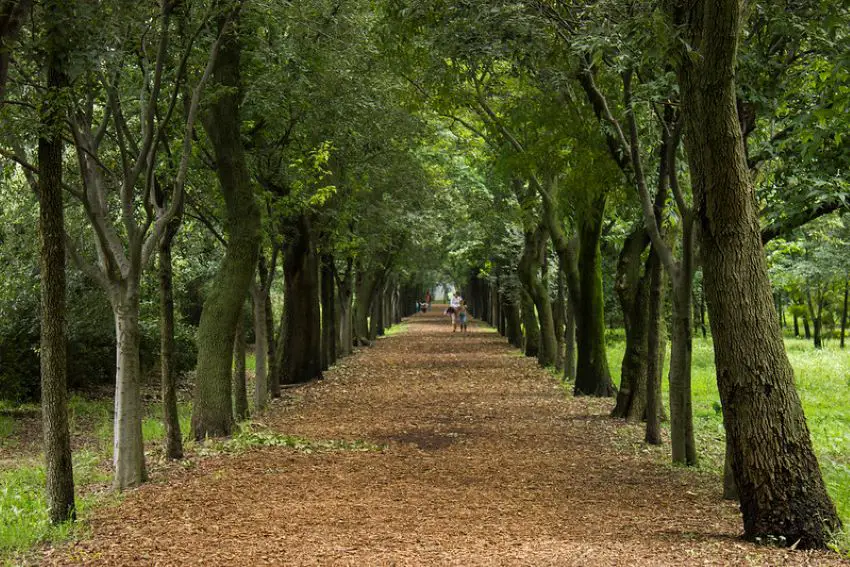
Where to eat in Coyoacán
Tostadas de Coyoacán: A stall in the Coyoacán Market known for crispy tortillas topped with ceviche or cochinita pibil.
Mercado de Comida de Coyoacán: Located at the tip of Calle Higuera, on the corner with the main square, visitors can make the most of a genuinely authentic street food market.
Tacos Chupacabras: A legendary taco stand known for its special “Chupa Cabra tacos,” which are a mix of chorizo and carnitas, garnished with various toppings.
Mi Compa Chava: The second branch of Chef Salvador Orozco’s Sinaloan-style restaurant is never not packed with seafood lovers. The ambience alone is worth the wait for a table.
Antojitos Lupita at Parque Frida: Locals swear blind that Lupita’s gordita cart, at the corner of Parque Frida Kahlo serves the best tacos and gorditas in Mexico City. Who are we to argue with local knowledge?
El Convento: Set in a 15th-century convent, sip tequila and enjoy high-end local cuisine in what is believed to have been the country’s first nunnery.
Los Danzantes: The sister restaurant to Oaxaca’s legendary Michelin star winner is located opposite the Coyote fountain.
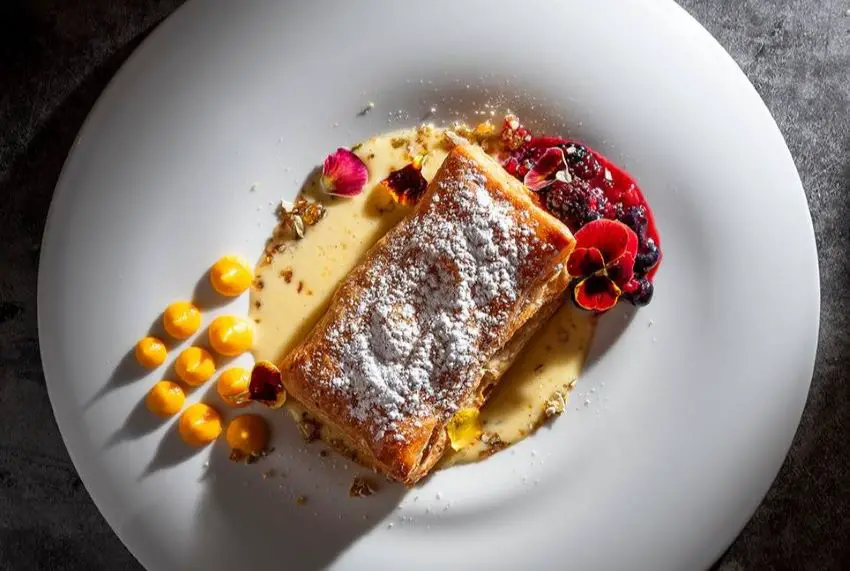
One hidden gem
The Callejón del Aguacate, or Avocado Alley. Legend has it that in the 1930s, a uniformed soldier was sauntering down this tiny alley when a young boy, captivated by the soldier’s appearance, asked to play with him. The boy was so insistent that the soldier lost his head and killed the boy.
His regret mounted so much that he did what any repentant murderer would do: supervise the construction of a Virgin Mary statue at the site of the child’s death. In this way, all future visitors to the alley could be given the opportunity to clean their sinful slates by offering prayers to the statue. Some say, if you tune in, you can feel the boy’s spirit wandering the alley.
Have we missed any must-see sights in out Coyoacán guide? Let us know down below!
Bethany Platanella is a travel planner and lifestyle writer based in Mexico City. She lives for the dopamine hit that comes directly after booking a plane ticket, exploring local markets, practicing yoga and munching on fresh tortillas. Sign up to receive her Sunday Love Letters to your inbox, peruse her blog or follow her on Instagram.
